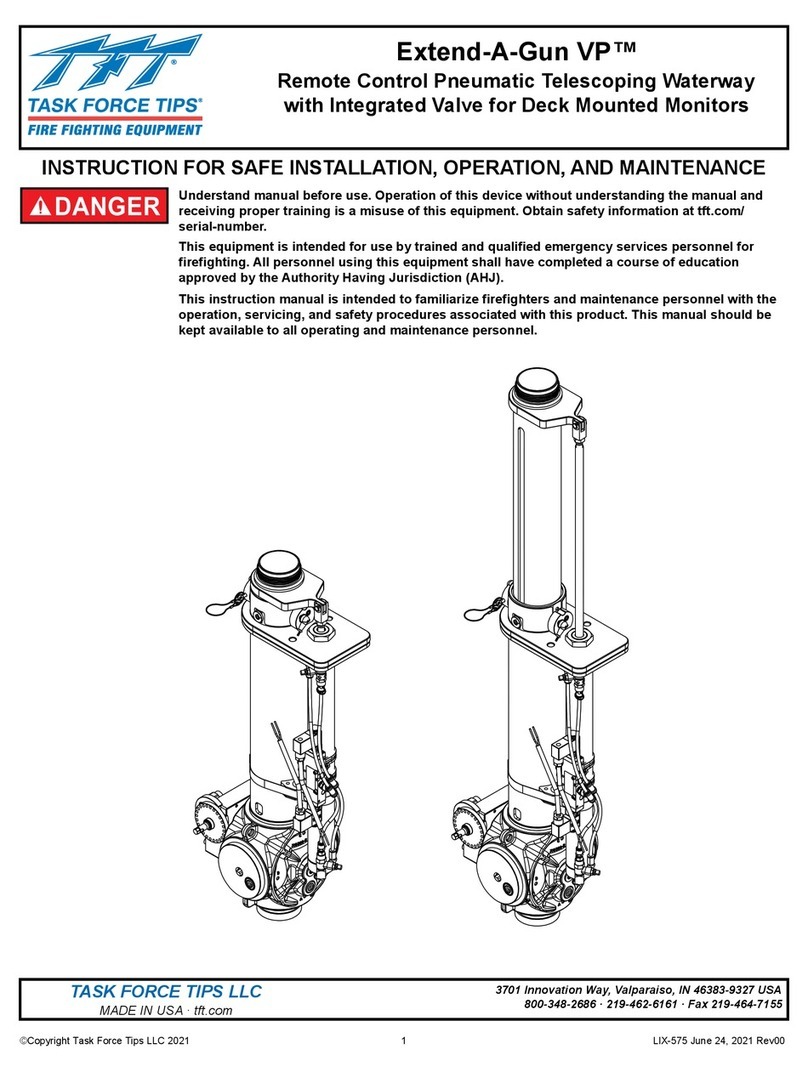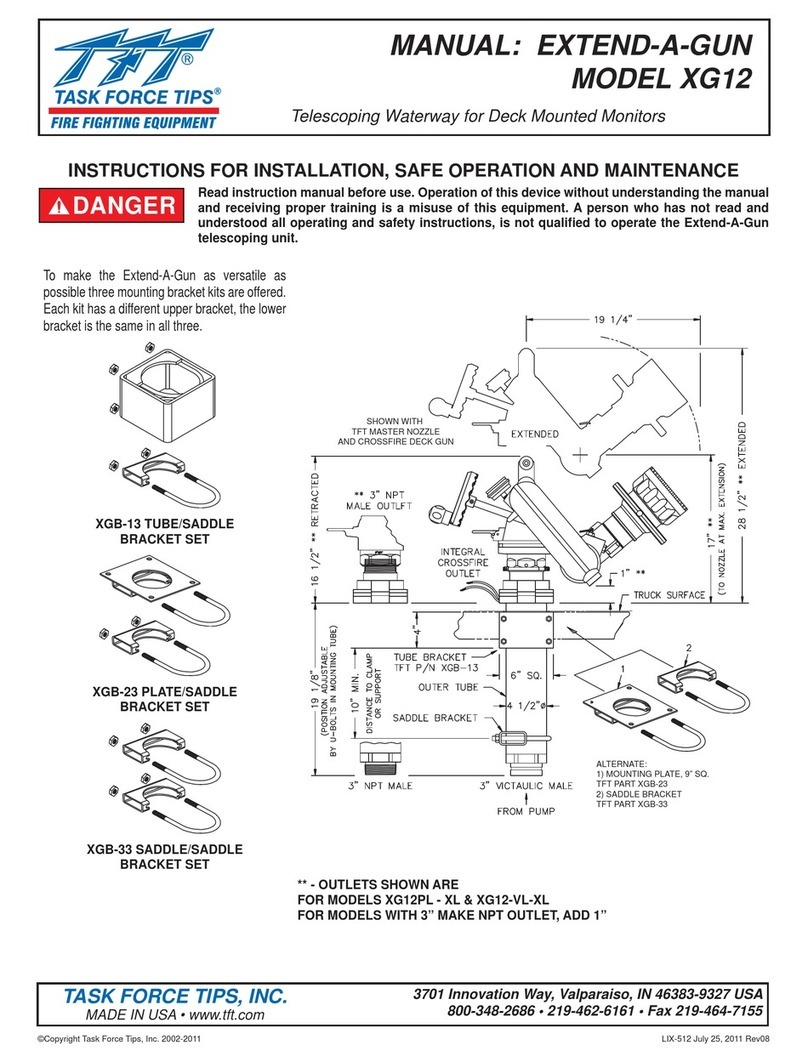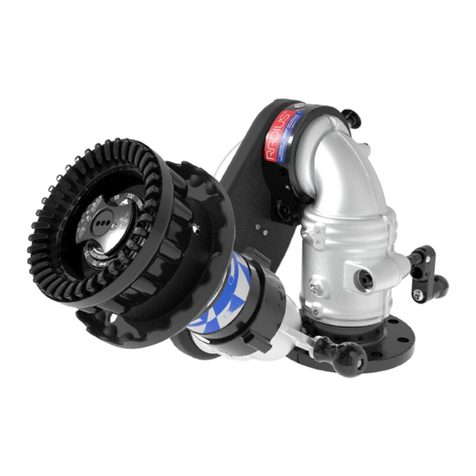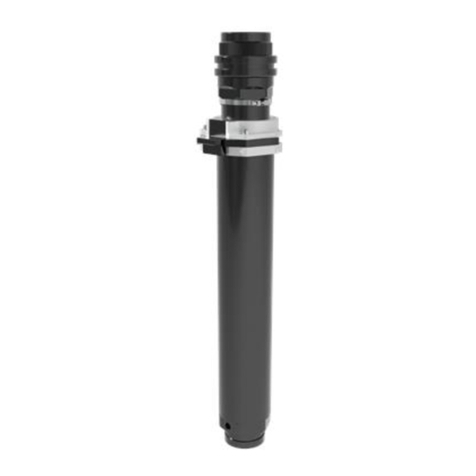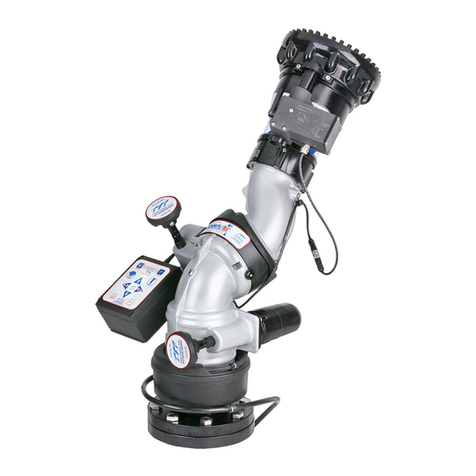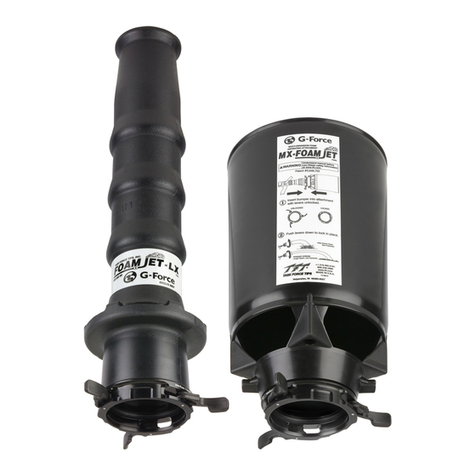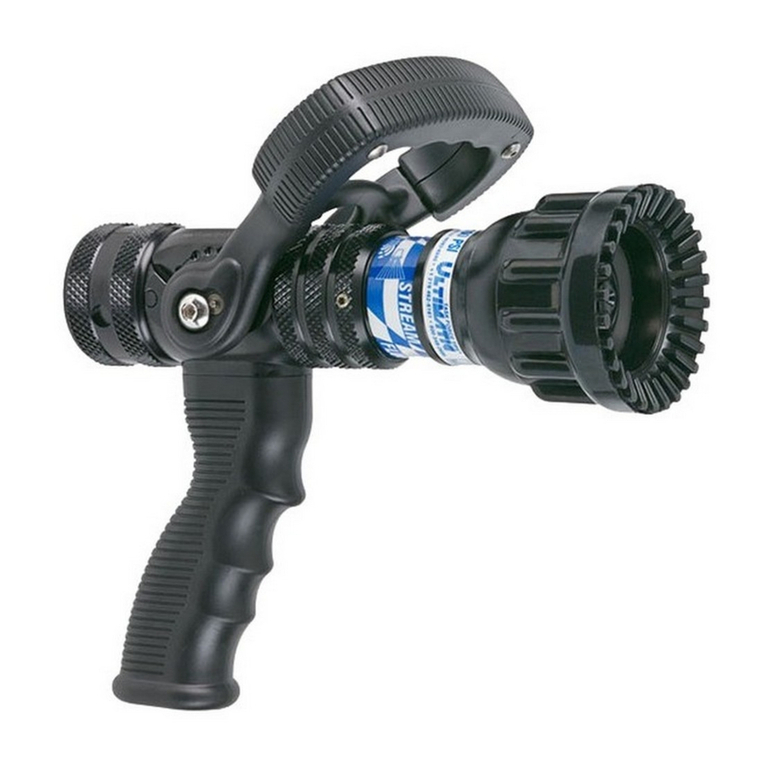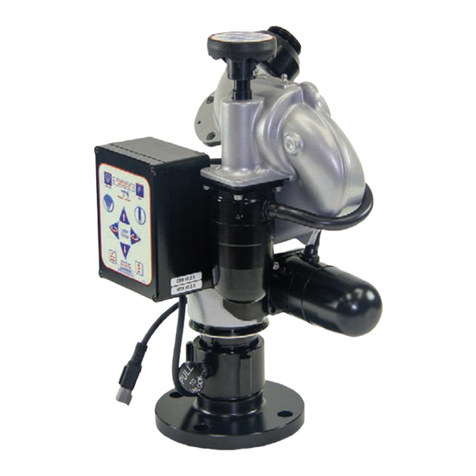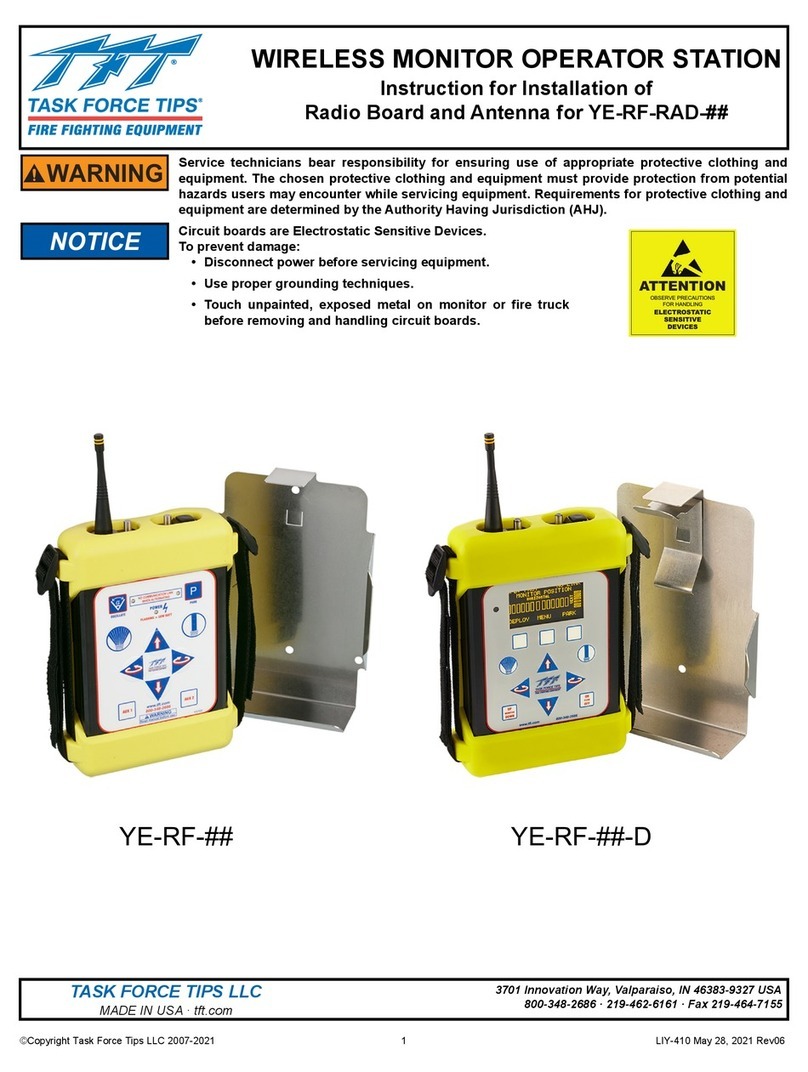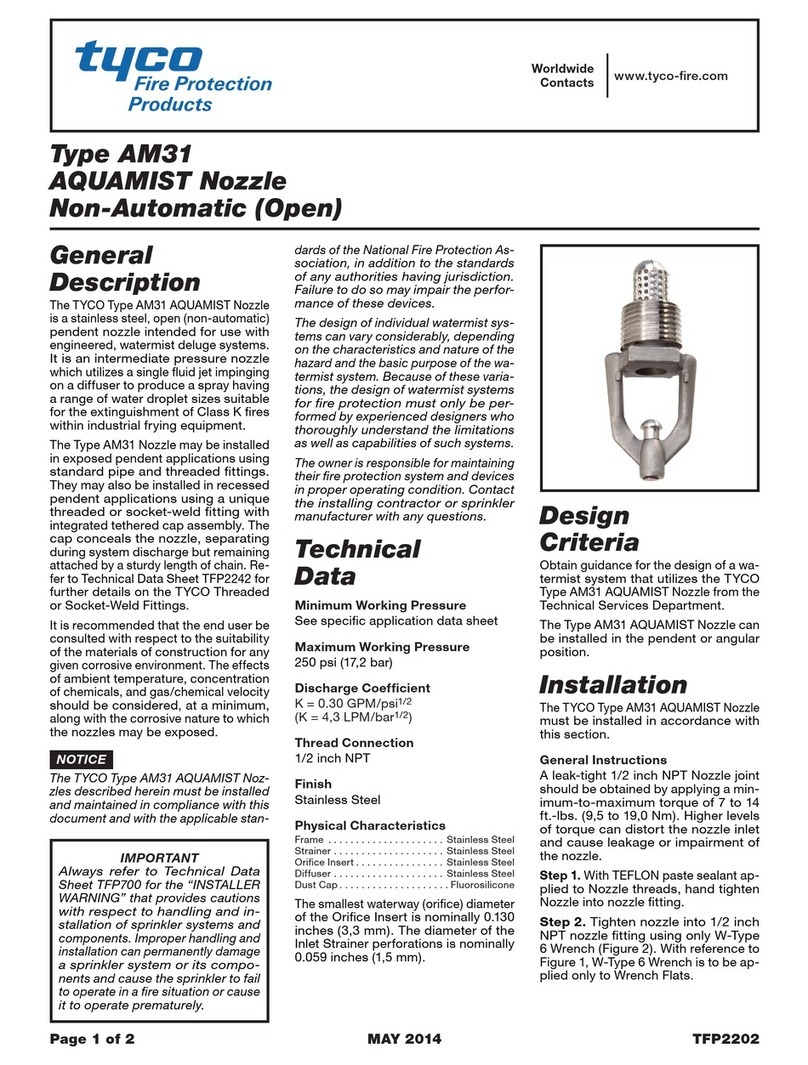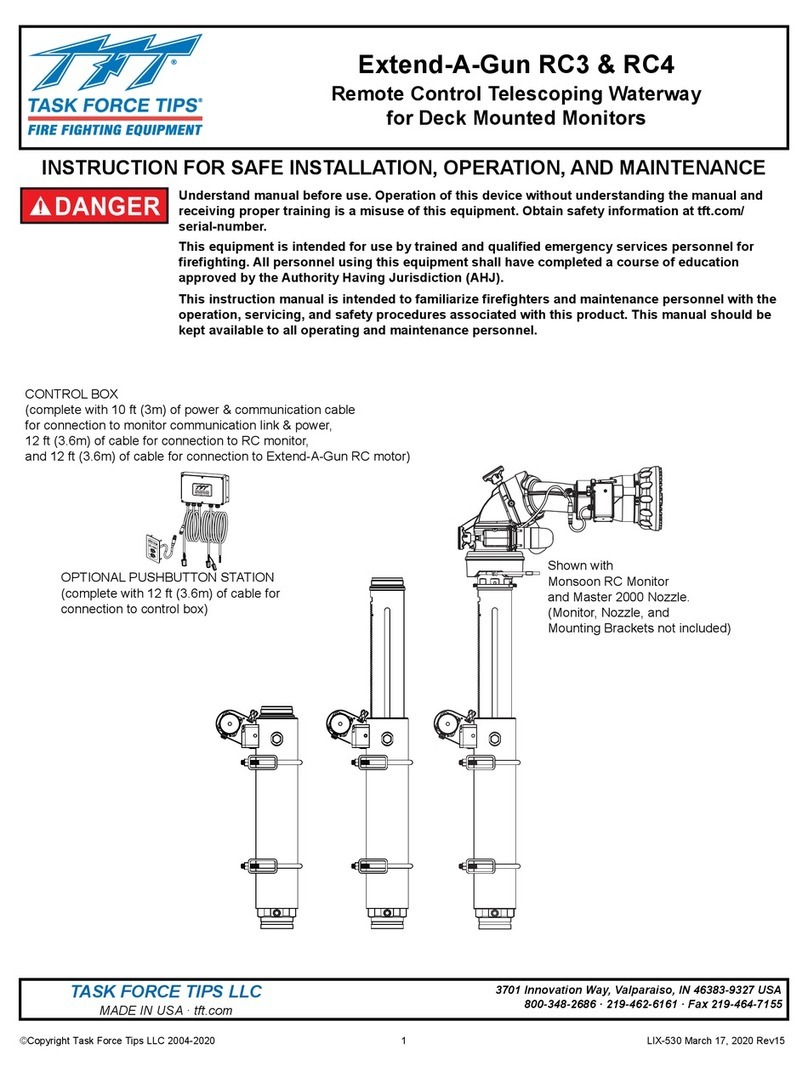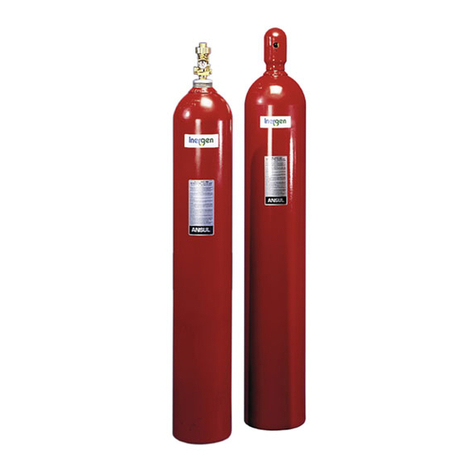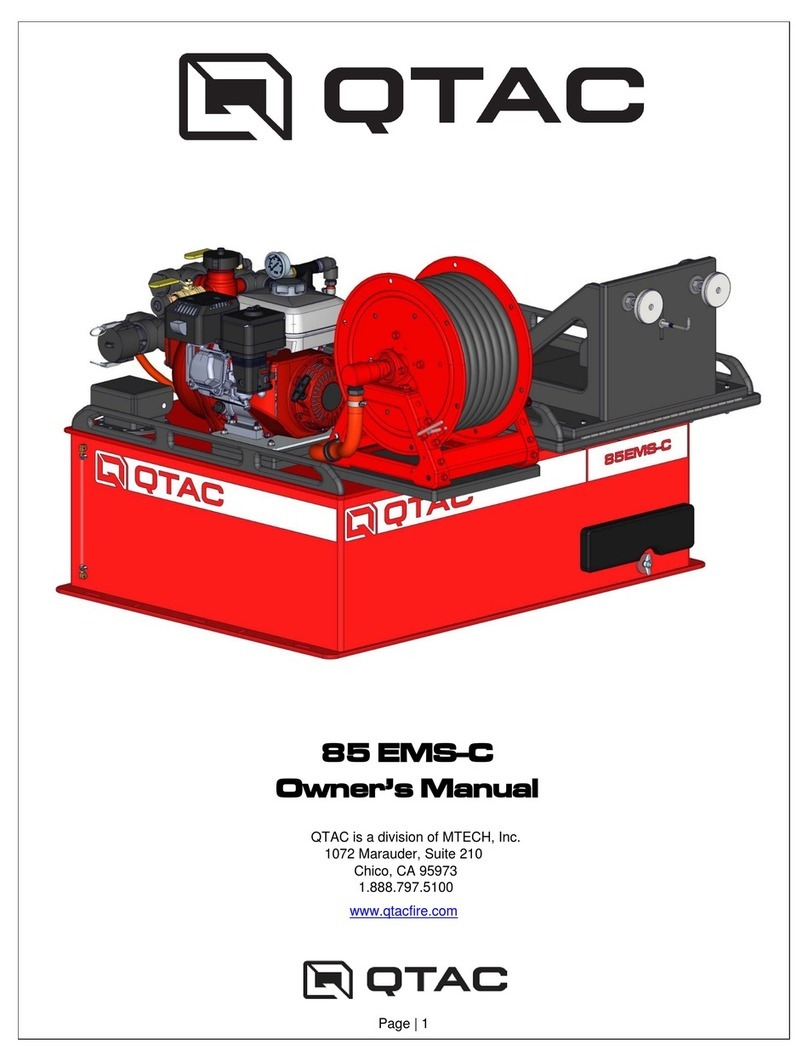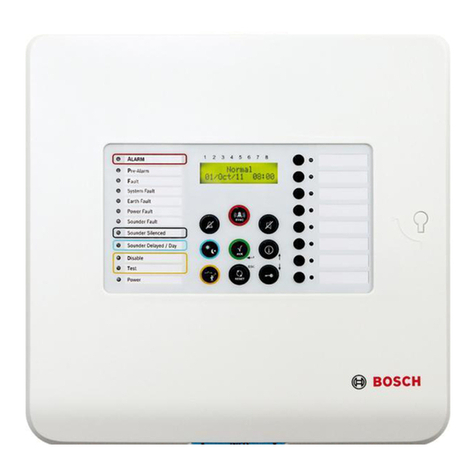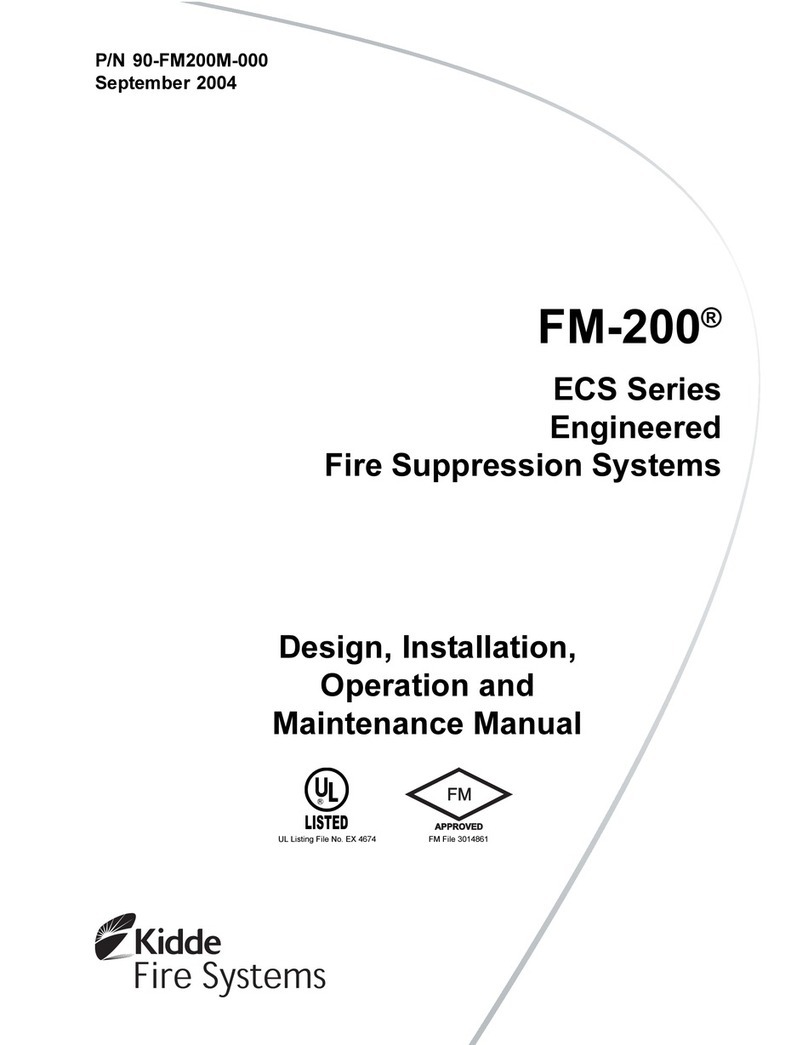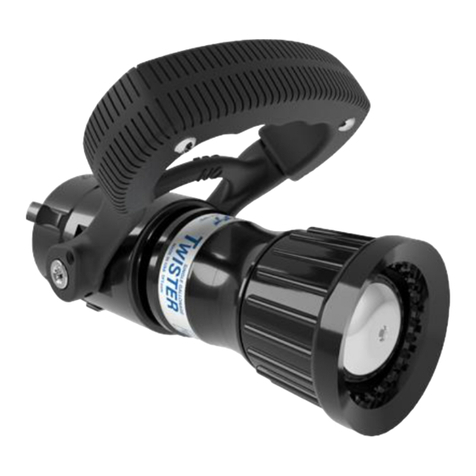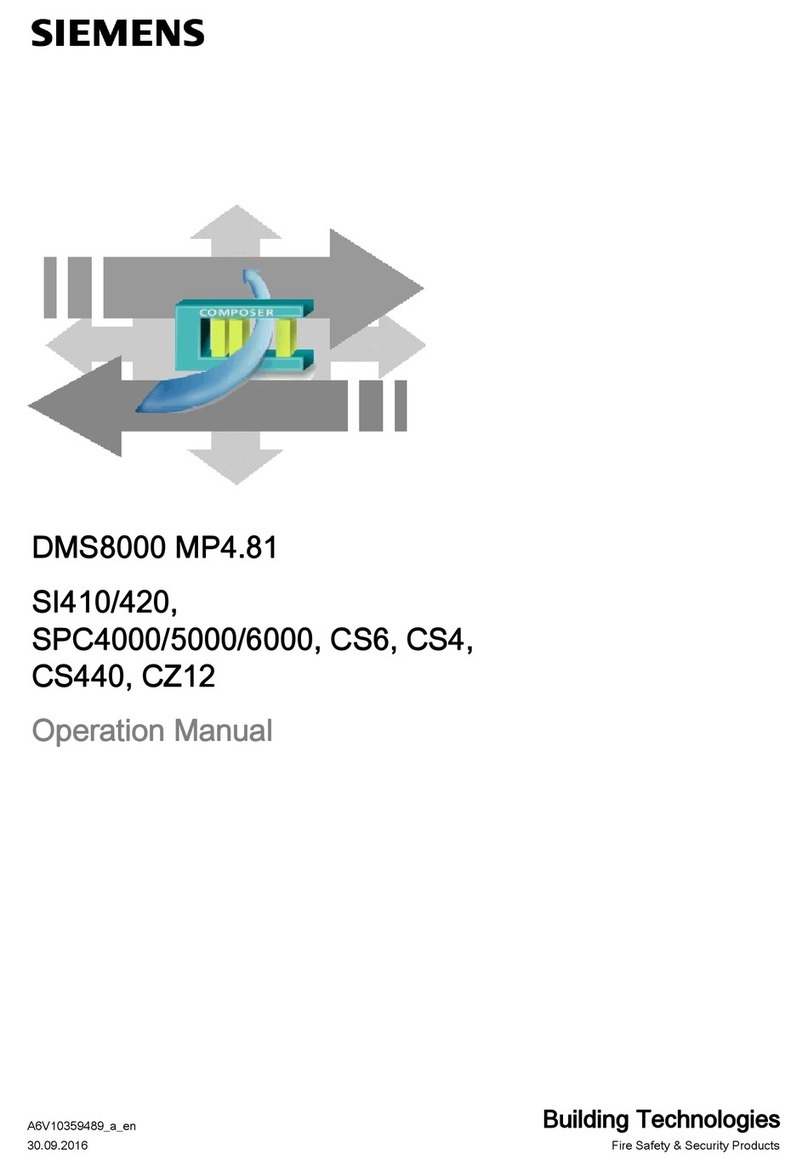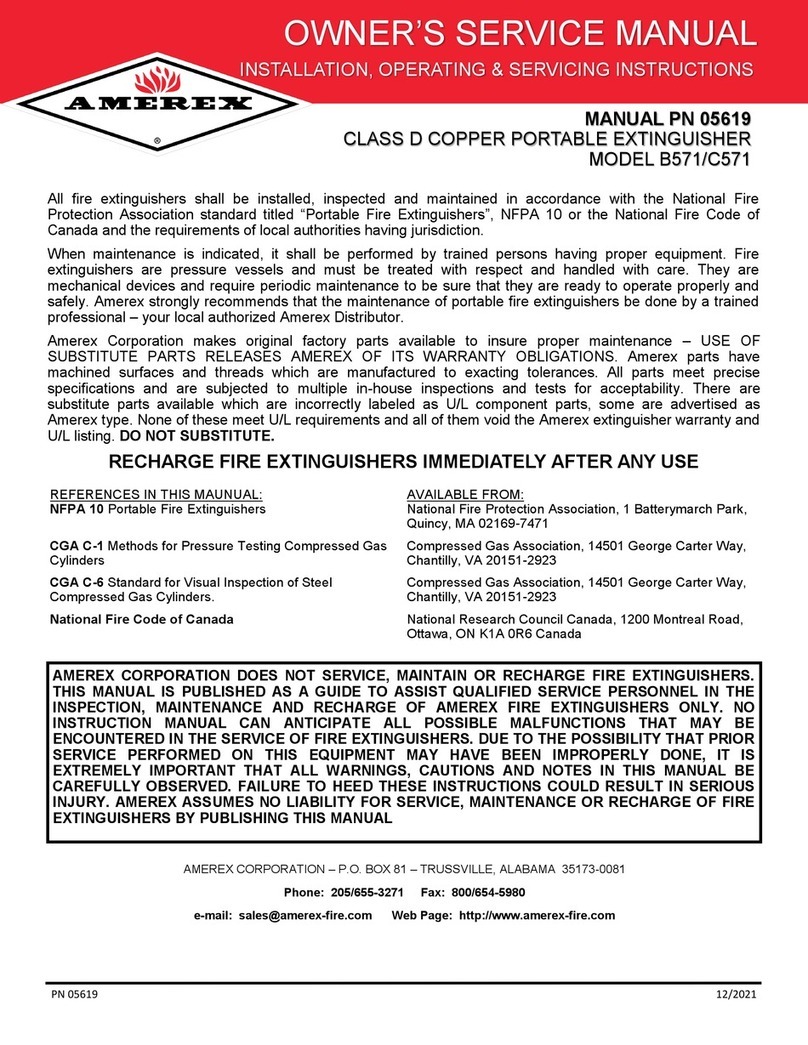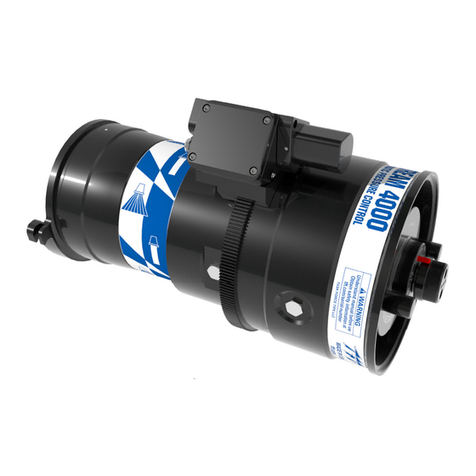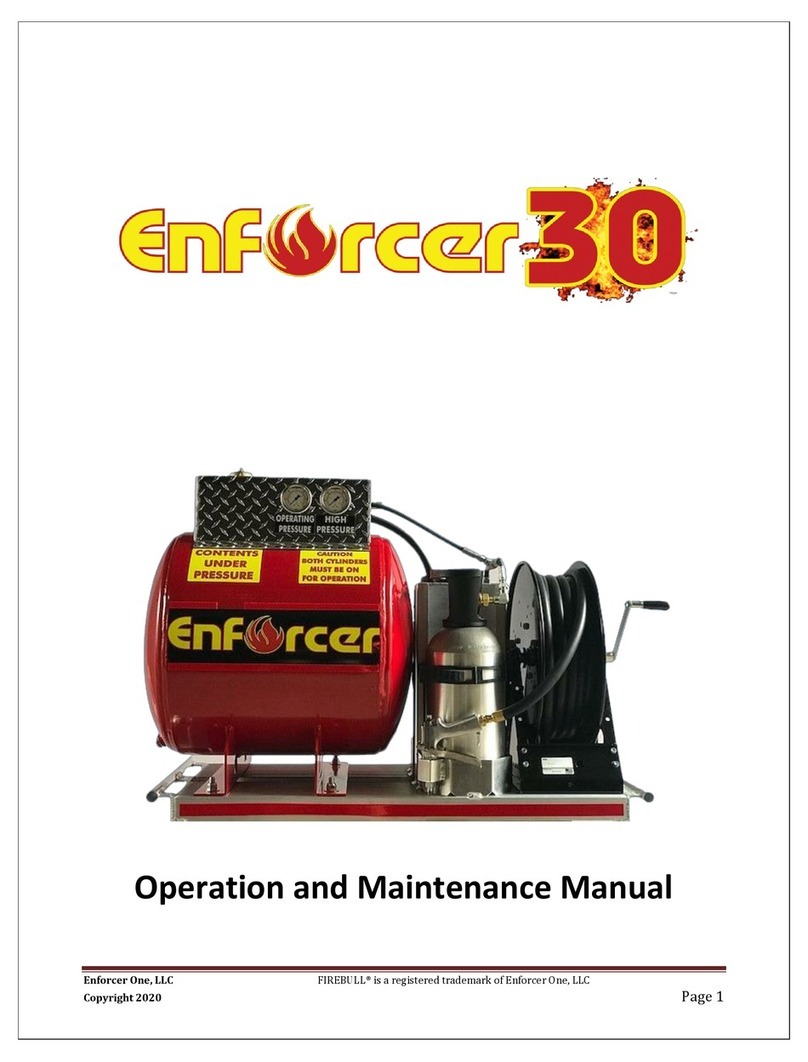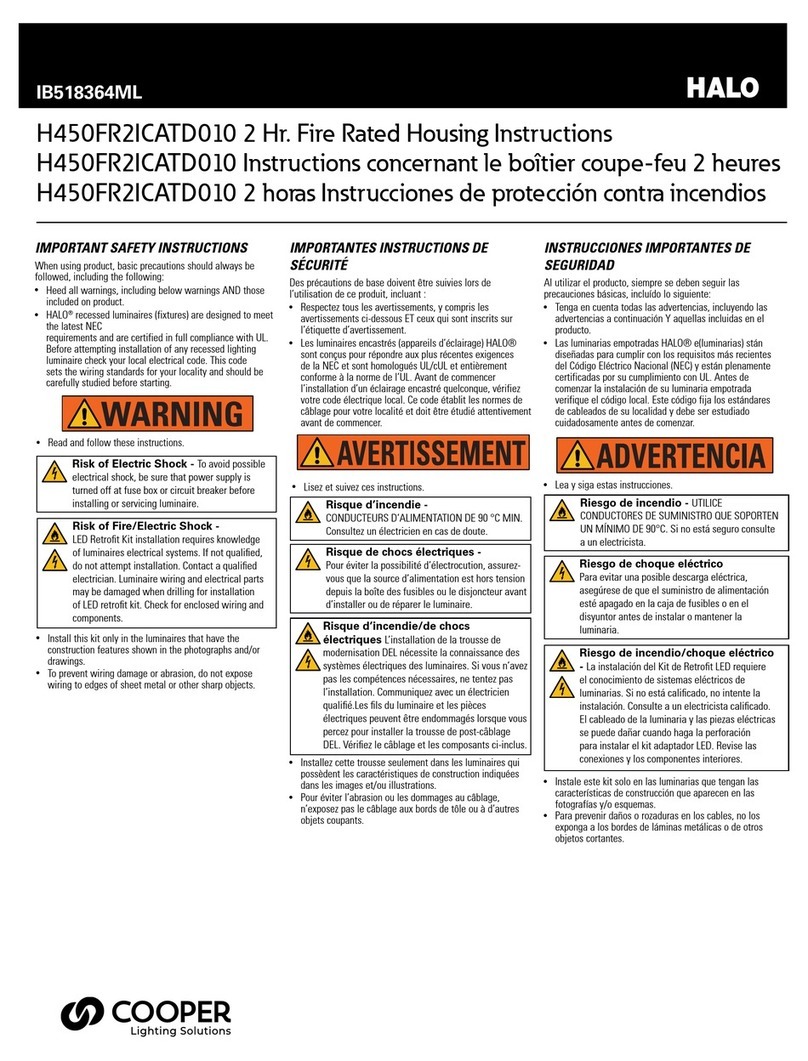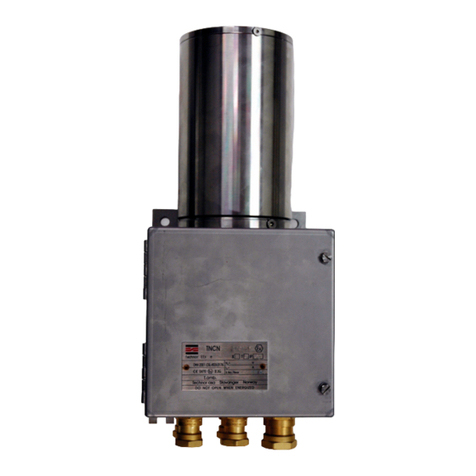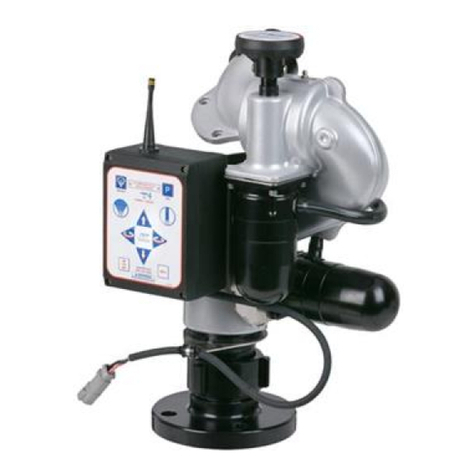
©Copyright Task Force Tips LLC 2020 LIM-032 February 18, 2020 Rev00
2
DANGER
PERSONAL RESPONSIBILITY CODE
The member companies of FEMSA that provide emergency response
equipment and services want responders to know and understand the
following:
1. Firefighting and Emergency Response are inherently dangerous activities
requiring proper training in their hazards and the use of extreme caution
at all times.
2. It is your responsibility to read and understand any user’s instructions,
including purpose and limitations, provided with any piece of equipment
you may be called upon to use.
3. It is your responsibility to know that you have been properly trained in
Firefighting and /or Emergency Response and in the use, precautions, and
care of any equipment you may be called upon to use.
4. It is your responsibility to be in proper physical condition and to maintain
the personal skill level required to operate any equipment you may be
called upon to use.
5. It is your responsibility to know that your equipment is in operable
condition and has been maintained in accordance with the manufacturer’s
instructions.
6. Failure to follow these guidelines may result in death, burns or other
severe injury.
FEMSA
Fire and Emergency Manufacturers and Service Association
P.O. Box 147, Lynnfield, MA 01940 • www.FEMSA.org
Additional information is published in LIY-500
Remote Control (RC) Monitor Electrical Controls.
©Copyright TaskForce Tips LLC 2008-2019 LIY-500April 8, 2019 Rev14
MANUAL: Remote Control (RC)
Monitor Electrical Controls
Supplemental Instructions for use with RC Monitor Manual
INSTRUCTIONS FOR INSTALLATION, SAFE OPERATION AND MAINTENANCE
DANGER Understand manual before use. Operation of this device without understanding the manual and
receiving proper training is a misuse of this equipment. Obtain safety information at www.tft.
com/serial-number
TASK FORCE TIPS LLC
MADE IN USA • tft.com
3701 Innovation Way, IN 46383-9327 USA
800-348-2686 • 219-462-6161 • Fax 219-464-7155
SECTION 4.1
Monitor Mounted
Operator Station
SECTION 4.2
Panel Mount
Operator Station
(Y4E-RP)
SECTION 4.3
Panel Mount With Display
Operator Station
(Y4E-RP-D)
SECTION 4.4
Tethered
Operator Station
(Y4E-CT-##)
SECTION 4.5
Tethered Operator Station
With Display
(Y4E-CT-##-D)
SECTION 4.6
Wireless
Operator Station
(YE-RF-##)
SECTION 4.7
Wireless Operator Station
With Display
(YE-RF-##-D)
SECTION 3.0
SECTION 4.0
Electrical Controls Installation and Operation
SECTION 4.11
Monitor Position Display
(Y4E-DISP)
SECTION 4.12
Remote Auxiliary Function
Interface Control
(YE-REMAUX)
SECTION 4.13
Electric RC Monitor Aerial
Truck Installation
SECTION 4.16
Electric Nozzle Actuator
SECTION 4.17
Valve Kits
(YE-VK-PH)
SECTION 5.0
Troubleshooting
SECTION 4.14
Multiplex Interface Control (YE-CAN#)
SECTION 4.15
Ethernet Interface Control
SECTION 4.9
Toggle Switch Monitor
Operator Station
(Y4E-TS)
SECTION 4.10
Monitor Communication
Interface Control
(Y4E-COMM)
SECTION 4.8
Joystick
Operator Station
(Y4E-JS)
©Copyright TaskForce Tips, Inc. 2009 LTT-135July 28, 2009 Rev00
NOZZLE TRAJECTORY
ELEVATION FACTORS
TASK FORCE TIPS, INC.
MADE IN USA • www.tft.com
3701 Innovation Way, Valparaiso, IN 46383-9327 USA
800-348-2686 • 219-462-6161 • Fax 219-464-7155
1.0 To estimate elevation angle when vertical and horizontal distances to target are known:
1.1 Find the maximum height and reach at 30° from the appropriate trajectory curve in LIM-030 or LIM-035.
1.2 Calculate the Height Factor by dividing the vertical distance to the target by maximum height from step 1.1.
1.3 Calculate the Reach Factor by dividing the horizontal distance to the target by maximum reach from step 1.1.
1.4 On the graph of nozzle trajectory elevation factors, plot the intersection of the Height Factor and Reach factor from steps 1.2 and 1.3. If this point lies
on or between the curves given, estimate the appropriate elevation angle. If this point lies within the shaded region of the graph, then a higher ÀRZ or
pressure must be used to reach the target.
2.0 To estimate maximum reach for a given elevation angle above 0°:
2.1 From the graph of nozzle trajectory elevation factors, choose the trajectory curve for the desired elevation angle.
2.2 Find the point where this trajectory curve intersects the height of discharge (zero height line).
2.3 Estimate the Reach Factor at this point using the scale across the top of the graph.
2.4 Multiply this Reach Factor by the reach at 30° elevation from the appropriate trajectory curve in LIM-030 or LIM-035.
3.0 To estimate maximum height for a given elevation angle above 0°:
3.1 From the graph of nozzle trajectory elevation factors, choose the trajectory curve for the desired elevation angle.
3.2 Find the maximum height on this trajectory curve.
3.3 Estimate the Height Factor at the maximum height using the scale on the left side of the graph.
3.4 Multiply this Height Factor by the height at 30° elevation from the appropriate trajectory curve in LIM-030 or LIM-035.
Stream reach and height at non-optimal elevations can be estimated as a factor of the performance at the optimal 30° elevation.
Refer to LIM-030 and LIM-035 for effective stream trajectories of TaskForce Tips Masterstream nozzles at 30° elevation.
This graph cannot be used to estimate maximum reach for elevation angles below 30°.
- -45° - -30°
--
°-
°
15°
30°
45°
60°
75°
85°
-2.0
-1.5
-1.0
-0.5
0.0
0.5
1.0
1.5
2.0
2.5
3.0
3.5
0.0 0.1 0.2 0.3 0.4 0.5 0.6 0.7 0.8 0.9 1.0 1.1
Reach Factor (compared to 30° elevation)
Height Factor (compared to 30° elevation)
height of
discharge
IF TARGET IS IN THIS REGION,
FLOW AND/OR PRESSURE MUST
BE INCREASED.
LIY-500 Remote Control (RC)
Monitor Electrical Controls
LTT-135 Nozzle Trajectory
Elevation Factors

